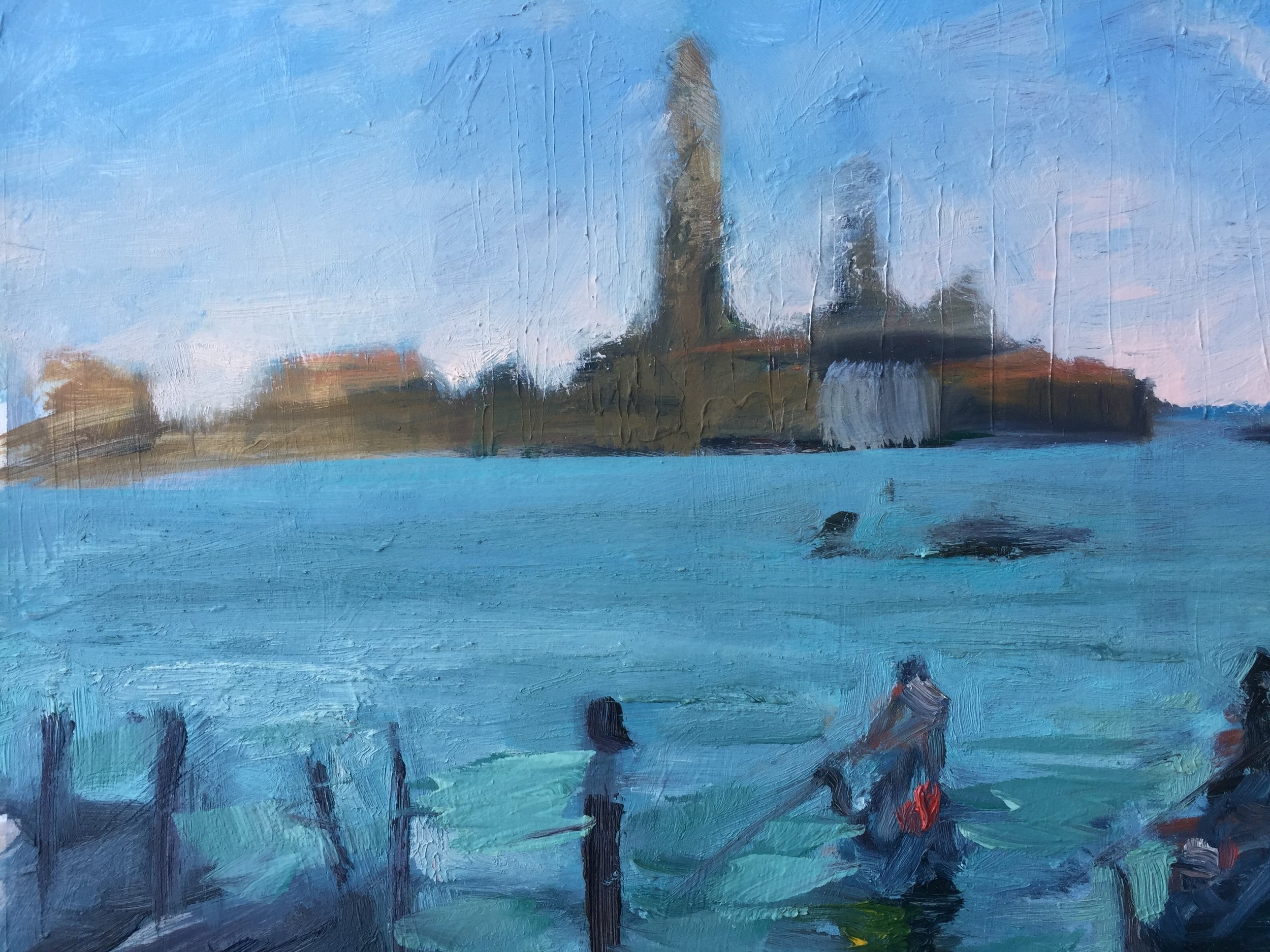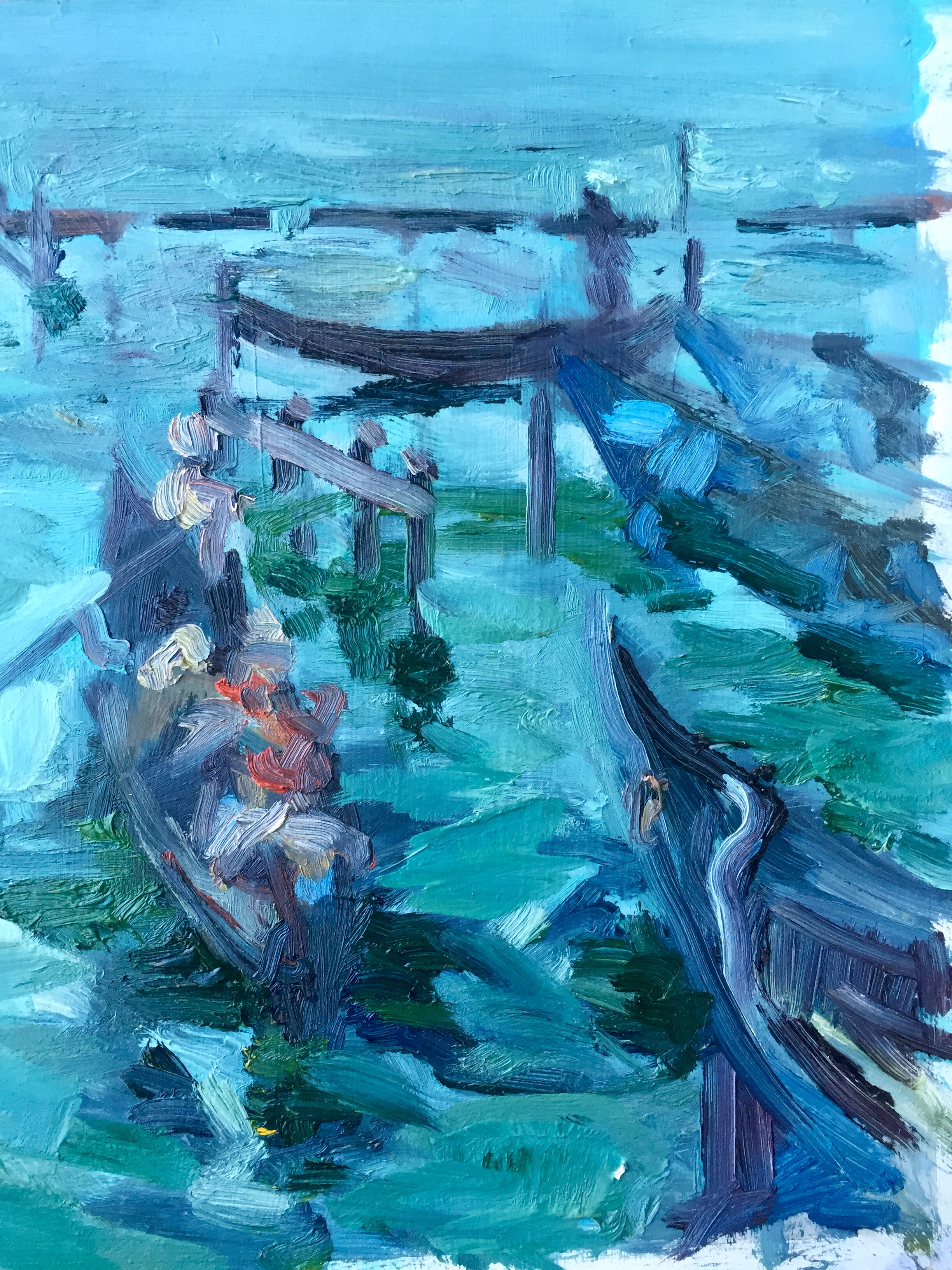Assembly
30x36 inches
oil and acrylic on canvas
2019
in private collection
I was really excited when an Australian artist Melissa Corbett approached me about recording an interview. Melissa is living and working in Spain and has been hosting artist interviews on her blog. Melissa is passionate about paper which is the unifying medium for her collage, printmaking, watercolors and comics. She embraces her obsession with pop and counterculture, and she is dedicated to social change.
Melissa’s warm and welcoming personality is perfect for interviewing strangers, and she made me feel immediately at ease even though I generally try to avoid being on video. Her questions were well researched and insightful, and it was a great experience geek out about art history together.
We talked about my history and experiences of growing up in Soviet and post-Soviet Ukraine, as well as the trajectory of Socialist Realism that become the dominant artistic doctrine in the USSR and reined supreme for many decades.
I am by no means an expert on the matter, but I am an eyewitness to its pervasive presence, the thorough infiltration into everyday life. Just like many people in the West claim to be immune to the insidious power of advertising due to having been exposed to it for so long, the same way many former soviet citizens ironically dismissed the propaganda-laden images of muscular steel workers and robust collective farm milk maids.
Socialist Realism of my youth continues to influence my paintings
Happy collective farm workers in a painting by Tatyana Golembievskaya (1967)
Tatyana Ostapenko
Harvest
36x48 inches
acrylic on canvas
SOLD
We all carry with us the indoctrination of our youth.
Our environments, the visual language that surrounds us nudges, if not thrusts us toward particular ideologies, no matter how independent and free thinking we think ourselves.
I grew up surrounded by images of impossibly happy children, noble cosmonauts and tractor operators with chiseled jaws that would make Superman wither with envy. They were always gazing into the glorious future, somewhere far off from the confines of the painted surfaces, into the promised bright beyond that we all were marching toward together.
Sentry
64x48 inches
acrylic on canvas
2019
SOLD
Now, I have to make one thing clear, very few people in my immediate surroundings believed any of this messianic deliverance-to-the-glorious-future rhetoric. The short period of pre-collapse soviet history I got to witness was definitely tinted by more sarcasm and cynicism than great sacrifice for the great communist beyond. Murmurs of descent were audible even to my very young ears. Transistor radios were tuned to the jammed signals from BBC and Radio Liberty, carbon copy typewriter pages of banned books were circulating almost freely between friends and political jokes were accorbic.
Gorbachev Evening News
18x24 inches
oil on canvas
2016
in private collection
There is an awesome power of the visual image, especially if it is carefully crafted for indoctrination. Despite knowing them to be heralds of false hope and outright lies, the pictorial language and a cast of characters of Socialist Realism were the constant silent companions of my youth. And they are all still here, downloaded into my subconscious, alive and well despite the collapse of the empire that populated every wall and placard with them.
Instead of denying my dubious heritage, I embrace it. I reference compositions, stiff heroic figures and vast landscapes that characterize Socialist Realist paintings. They inform my current art practice, just as much as El Greco’s emaciated and ecstatic saints or Sargent’s panterly bravura. (I was a strange child, might not come as a surprise to you, but I used to draw from El Greco’s paintings when I was about eight years old. That was my idea of fun. Kinda still is.)
and if you are still reading,











